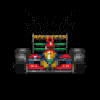- Login or Register
No account yet? Sign up


There is no such thing as a seamless gearbox.SiLo wrote:How to seamless shift gearboxes actually work? Surely there is a downtime when the gears are changed and the propshaft has to adapt its speed?
This depends on the definition of "seamless" when applied to gearbox functionality. If for this instance we assume that "seamless" means continued positive torque seen at the input shaft of the transmission during a gearshift then I believe this is possible with a technology such as Zero Shift. If I have interpreted the geometry of the Zero Shift components correctly there is no need to relieve the ring currently supplying torque to the output shaft prior to selecting the new ratio (no need to reduce input torque) and also there is no requirement for timing the disengagement (components are self protecting). Therefore "seamless"?autogyro wrote:There is no such thing as a seamless gearbox.
If this is not a gap where either no torque is tranfered or torque is converted to heat and wear, what is it?Cogs wrote:This depends on the definition of "seamless" when applied to gearbox functionality. If for this instance we assume that "seamless" means continued positive torque seen at the input shaft of the transmission during a gearshift then I believe this is possible with a technology such as Zero Shift. If I have interpreted the geometry of the Zero Shift components correctly there is no need to relieve the ring currently supplying torque to the output shaft prior to selecting the new ratio (no need to reduce input torque) and also there is no requirement for timing the disengagement (components are self protecting). Therefore "seamless"?autogyro wrote:There is no such thing as a seamless gearbox.
The only question that remains is whether it is possible to cope with the magnitude of the dynamic torque spikes that would ensue? If the engine is coupled, the transmission would have to cope with the synchronisation of its inertia. Maybe this accounts for the reported clutch slip?
I agree that the output torque must change from one value to another but don't see this as being a "gap".
The point I was making was that the word "gap" suggests the need to break torque to the output shaft which does not seem to be the case with this system. The torque change at the output side is an unavoidable result of changing discrete ratios but may be managed through slip or torsional compliance (I agree that if this excess torque were managed it would convert to heat/noise) resulting in a controlled change not a gap.autogyro wrote:If this is not a gap where either no torque is tranfered or torque is converted to heat and wear, what is it?
sorry this is completely wrong a human is no where as fast as a computer controlled dsg box or even a simple airshifter any.autogyro wrote:A good racing driver using a manualy operated dog ring box and performing a 'racing' power on change would still equal or beat any of the current technical tricks.
Bring back proper drivers.
Couldn't agree more. Which as far as I can see is exactly what Zero Shift is....two bi-directional sprags.flynfrog wrote:sorry this is completely wrong a human is no where as fast as a computer controlled dsg box or even a simple airshifter any.
Back on topic instead of rants. Couldn't a double clutch transmission use two sprags to maintain "seamlessness" You could then engage both shafts at the same time until the next higher gear was up to speed. Any look at telemetry will show you this.
Correct me if I'm wrong but isn't the second half of your statement "torque being transferred is converted in most part to heat and wear" contradictory to the first "There will ALWAYS be a 'gap'"?autogyro wrote:There will ALWAYS be a 'gap' where either no torque is transfered from input to output, or the toque being transfered is converted in most part to heat and wear.